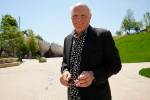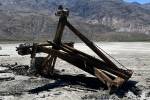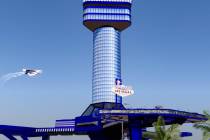Nevada’s original underground economy was a real hole



Long before the Mob trolled the Strip, a small corner of Nevada had its own underground economy.
After pioneer Absalom Lehman stumbled upon a rambling cave system beneath the Snake Range east of Ely in 1885, he launched what was perhaps the Silver State’s first big tourism draw.
It didn’t take long for Lehman Caves to grow from local legend into national landmark. Today, the cave is a signature attraction at Great Basin National Park.
The underground chamber’s story began long before Lehman found it.
It has taken 600 million years of water flow, sediment growth and tectonic activity to sculpt the marble cave, according to the National Park Service. As underground streams dissolved rock, the liquefied limestone dried and formed stalactites, stalagmites and a buffet of other shapes. There’s cave bacon (a thin, transparent curtain of rock that shows striated pinks, browns and yellows when lit from behind) and cave popcorn (little nodules made from minerals in splashing water droplets). Lehman Caves also has more than 300 rare shield formations, created when water gushed through bedrock fractures.
Lehman, a rancher with a homestead a mile from the cave system, gets credit for discovering the cave, though archaeological evidence shows Native Americans might have used the site as a burial ground more than 1,000 years ago.
It didn’t take long for Lehman to transform the natural attraction into a free-for-all. He offered hundreds of sightseers tours that included unsupervised overnight stays. Visitors banged on stalactites and stalagmites to make “cave music.” They snapped off and kept small formations as souvenirs. There were even subterranean weddings.
Federal cleanup crews in the 1930s found hundreds of pieces of debris, including coins, garters, tin cans and lumber.
Assaults on the cave were routine. A White Pine newspaper reported on explorers “armed with sledgehammers” breaking their way into new rooms. When today’s tour guides light up the cave’s ceilings, you can see hundreds of sets of smudged, black initials — graffiti left by the cave’s first tourists.
Lehman had plans to further develop the cave through additional excavation. He died in 1891, before he had the chance.
Even without its namesake, Lehman Caves continued to host unsupervised guests until 1922, when state legislators persuaded President Warren G. Harding to name the site a national monument.
The attraction’s notoriety grew from there. Mount Everest conqueror Sir Edmund Hillary toured the cave in 1962 as part of a U.S. Forest Service tour. The cave provided the background for a 1959 TV ad for Viceroy cigarettes and the other-worldly set for a 1965 sci-fi movie called “Horrors of the Red Planet.”
The cave became part of Great Basin National Park when the park was established in 1986.
Thanks to the protection the national park confers, visitors today still can enjoy tours that take them a quarter of a mile into the cave to marvel at the geologic bounty below ground. They just have to keep their hands — and their sledgehammers — to themselves.
Contact reporter Jennifer Robison at jrobison@reviewjournal.com. Follow @J_Robison1 on Twitter.


















